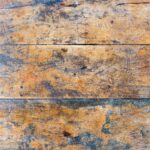Mold is a common problem in many homes, and is often caused by poor ventilation, leaks, and high humidity. Dealing with mold, especially on your popcorn ceiling can seem like a daunting task, but it doesn’t have to be. There are many steps that you can take to treat and prevent mold growth in your home. Here are eight steps you can follow to deal with the mold on your popcorn ceiling.
Why is It Important to Address Your Mold Problem at Home
Mold is a type of fungus that can grow in a variety of areas, including our homes. Although mold is a natural part of the environment, it can cause serious health issues and damage to our homes if it is not addressed. Dealing with mold in our homes is important for a number of reasons.
First, mold can cause health problems. Mold spores can be inhaled, which can lead to allergic reactions, respiratory illnesses, and even asthma. Mold can also cause skin irritation and other infections, especially in individuals with weakened immune systems. Therefore, it is important to deal with mold in our homes as soon as possible in order to prevent health issues from arising.
Second, mold can cause damage to our homes. If left unchecked, mold can grow on walls, ceilings, and other surfaces, causing discoloration, staining, and other damage. In some cases, mold can even cause structural damage to our homes, leading to more costly repairs. Therefore, it is important to deal with mold in our homes in order to reduce the possibility of costly damage.
Overall, dealing with mold in our homes is important for a number of reasons. Not only can mold cause health problems, it can also cause damage to our homes and spread quickly if left unchecked. Therefore, it is important to address mold in our homes as soon as possible in order to prevent further issues from arising.
Identify if its Black Mold
Black mold is identifiable by its color, which is usually black or dark green. It may also have a slightly fuzzy appearance. It is often found in damp and humid areas such as bathrooms, basements, and other areas with poor ventilation.
Safety First When Dealing with Mold
Before attempting to remove the mold, make sure that you are wearing protective gear such as gloves, a face mask, and eye protection. This will help to protect you from any potential health hazards associated with mold.
Dampen the Area With Mold
Before you begin cleaning, dampen the affected area with a mild detergent and water solution. This will help to loosen the mold and make it easier to remove.
Scrub Away the Mold
Using a stiff brush, gently scrub away the mold from the ceiling. Make sure to use a circular motion to completely remove all of the mold.
Vacuum the Ceiling
Use a vacuum with a HEPA filter to remove any remaining mold particles. This will help to ensure that all of the mold has been eliminated.
Clean the Ceiling
Once all of the mold has been removed, clean the area with a mild detergent and water solution. Allow the area to dry completely before applying a mold-resistant primer.
Apply a Mold-Resistant Primer
Apply a mold-resistant primer to the area to help prevent future mold growth. Allow the primer to dry completely before painting the ceiling.
Paint the Ceiling
Once the primer is dry, paint the ceiling with a mold-resistant paint. This will help to further protect the area from future mold growth. By following these steps, you should be able to effectively remove black mold from your popcorn ceiling. Remember to always wear protective gear when dealing with mold and make sure to clean the area thoroughly after removing the mold.









